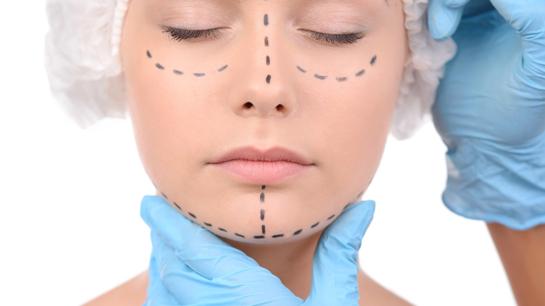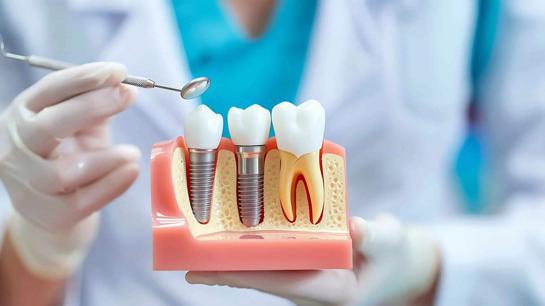Rhinoplasty Abroad Guide
This guide explains rhinoplasty overseas—what to expect from nose surgery, recovery, risks, and results. Learn how a nose job can enhance breathing, shape, and confidence while considering safety, cost, and aftercare
What Is Rhinoplasty?
Alright, let’s just start simple—rhinoplasty. Most people call it a “nose job.” Feels a bit casual for what it actually is, but that’s what sticks, isn’t it? Rhinoplasty is, well, it’s surgery for your nose. Maybe you want to tweak the shape, fix a bump, breathe better, or mend things after an injury. Sometimes it’s about vanity, but honestly, just as often it’s about comfort and confidence.
There isn’t a stack of identical noses on a shelf somewhere. Surgical approaches are pretty personal—surgeons might sneak in from inside your nostrils (that’s called closed) or, if they need to really see everything, they’ll add a tiny cut under your nose (open). Doesn’t sound glamorous, but those extra millimeters matter. Some want just a subtle refinement; others, more transformative work. And, to be honest, there’s a bit of artistry to it.
Let’s break it down: rhinoplasty is as unique as the faces we carry around. No factory work here.
Who Is a Candidate for Rhinoplasty?
Are you the “right” person for rhinoplasty abroad? That’s always the big question. Here’s the honest truth: the “ideal candidate” is less about age or gender and more about why you want it and how you handle the process.
Usually, people fall into one of two camps:
- Health reasons: Maybe you’re dealing with breathing that’s noisy or blocked, old injuries, or something you’ve had since childhood.
- Looks: Some noses just run in the family, right? Or maybe you’ve always thought yours felt out of place—a bridge too high, a tip too flat.
But then, it comes down to the checklist:
- Adult? (Because noses, thankfully, stop growing. Eventually.)
- Healthy, with no wild-card health issues.
- Realistic about what this can do—no magic, but subtle wonders.
- Not a smoker, or at least willing to stop for a bit.
- Doing it for yourself, not because you’re being nudged by someone else.
Surgeons abroad? The good ones? They check all this. Sometimes they’ll tell you “wait” or “think it through.” That’s not them being cagey—it’s them caring about your outcome.
Risks and Complications
Let’s not kid ourselves—there’s no such thing as risk-free surgery. You’ve probably heard the horror stories, but most are rare.
Here’s what most folks actually run into:
- Swelling. Lots of it.
- Bruising around the eyes (so those sunglasses post-surgery really serve a purpose).
- Numbness or tingling. It’s a weird feeling, but it passes.
- Stuffy nose for a while. Breathing through your mouth suddenly becomes your new talent.
Sometimes, things get trickier:
- Breathing issues that linger.
- Infections (rare, but worth mentioning).
- Changes you didn’t expect or don’t love.
- And yes, on occasion, someone needs a second go—revision surgery isn’t unheard of. Pick a seasoned surgeon, ask the hard questions, and take aftercare seriously. That drops the risks.
Preparing for the Procedure
- Expect a virtual or in-person chat with your surgeon first. They’ll take photos, maybe do scans, and want to know everything about your health.
- There’ll be some lab work—you want to rule out infection and make sure there aren’t hidden health surprises.
- Meds like blood thinners or certain herbs might need to pause. Your surgeon will spell that out (if not, that’s a flag).
- Stop smoking, for real. It matters for healing.
- Find a buddy or arrange aftercare for those first days. You will need someone.
- There’s a lot of paperwork, a bit of anxiety, and maybe some packing lists. Loose shirts, snacks, and the new Netflix list you never get around to—these matter more than you’d expect when recovering away from home.
How the Surgery Happens
- Most times, you’ll be asleep (general anesthesia is the norm), but in less complex cases, a local plus sedative might be used.
- Incisions: Sometimes just inside the nostrils (stealthy). Sometimes, they add a little nick under your nose.
- Reshaping: Cartilage might be trimmed or added—from your own body, usually. Bone sometimes gets a touch-up too.
- Any blocked passages get cleared.
- Stitching up: Likely dissolvable stitches. A splint goes over the nose, sometimes packed inside, which feels odd but keeps things in place.
- Recovery: Most folks go back to their hotel or an overnight clinic stay. Rarely, anything more.
It’s a mix of science and art—a few hours that can shift how you feel, inside and out.
Recovery and Aftercare
I won’t sugarcoat it: you’ll feel pretty beat up at first. Day one to three are clunky—think raccoon eyes, pressure in your face, snoozing upright with pillows.
Here’s a timeline to keep expectations honest:
| Recovery Stage | What’s Up |
|---|---|
| 1st Week | Splint on, swelling/bruising at its peak, stuffy head |
| Week 2–3 | Swelling reduces; most bruising fades out |
| Week 4+ | Looking almost yourself, but tip remains puffy |
| Month 3–6 | Subtle tweaks as swelling fades for real |
| Up to 1 year | Final shape emerges, nose “settles in” |
Tips from the trenches:
- Sleep with head elevated.
- Stay clear of gyms and sports for a bit.
- No glasses perched on that new bridge for a while.
- Use rinses and ointments, keep up with follow-ups (yes, even on Zoom).
At some point, you’ll look in the mirror and think: “I don’t remember exactly what my old nose looked like.” That’s how it should feel.
Results and Effectiveness
Let’s get real—most people come away satisfied. It isn’t a total reinvention, but it’s often a huge confidence lift. Your nose should look blended with your face, not “done.” Breathing gets easier for many, and visible scars are minimal or completely hidden.
Success rates are strong, but—full integrity here—some people do need a minor touch-up. Waiting for those final results? Patience is mandatory; that “aha!” moment is a slow build across months, not days.
Alternatives to Rhinoplasty
Maybe you aren’t quite ready for the “full ride” of surgery abroad. That’s okay, too.
- Some opt for fillers to camouflage bumps or unevenness. It’s quick and nearly painless, but doesn’t last more than a year or so.
- Other tech—like lasers or radiofrequency—might help with tiny imperfections, but don’t expect structural changes.
- For functional issues, sometimes a breathing aid or device is enough.
Alternatives = less risk, less downtime, but also, less dramatic and less lasting.
Why Go Abroad? The Honest Draw
- Costs: Let’s not tiptoe—surgery can be much cheaper, sometimes dramatically so.
- Access: High-volume surgeons who know noses, inside out.
- Facilities: Private clinics, newer tech, comfy recovery rooms.
- No waiting lists: Overseas, the time from “maybe” to “surgery” can be a few weeks, not months.
- Privacy: You’re not bumping into coworkers on your healing week.
- Travel support: Some clinics take care of details—rides, language, the lot.
What’s the catch? Do your homework. Check credentials. Clarify every line on your bill. Know who’ll help if you run into trouble. The logistics are a bit more involved, sure, but the upside can be huge.
Questions Everyone Asks
- Is it painful?
- Mostly discomfort—pressure, swelling, and congestion. Real pain is rare and manageable with meds.
- Hospital stay—how long?
- Usually a night or less. More complex work? Maybe a bit longer, but most folks are up and about quickly.
- When can I fly home or get back to work?
- Count on a week, give or take. Swelling fades enough for public appearances within two weeks typically.
- Results—forever?
- The new shape sticks, though, like anything, time brings subtle shifts as you age.
- Is it safe abroad?
- If you stick to reputable, accredited clinics and experienced surgeons, yes. Standards at top clinics match or exceed those at home. Take aftercare seriously, wherever you are.
- Language barriers?
- Many clinics have English-speaking coordinators. Still, ask and confirm—communication is crucial.
- What about follow-up or if I need a revision?
- Stay in touch with your surgical team. Some offer virtual follow-ups, others may suggest local specialists for check-ins or tweaks.
One Last Thought
Getting rhinoplasty abroad isn’t just about a nose—it’s about reclaiming comfort, confidence, maybe a sliver of adventure too. It’s not instant and not risk-free, but with the right prep and the right people, it can be downright transformative.
So, keep asking questions. Trust your gut. And remember—it’s your face, your choice, your journey.























